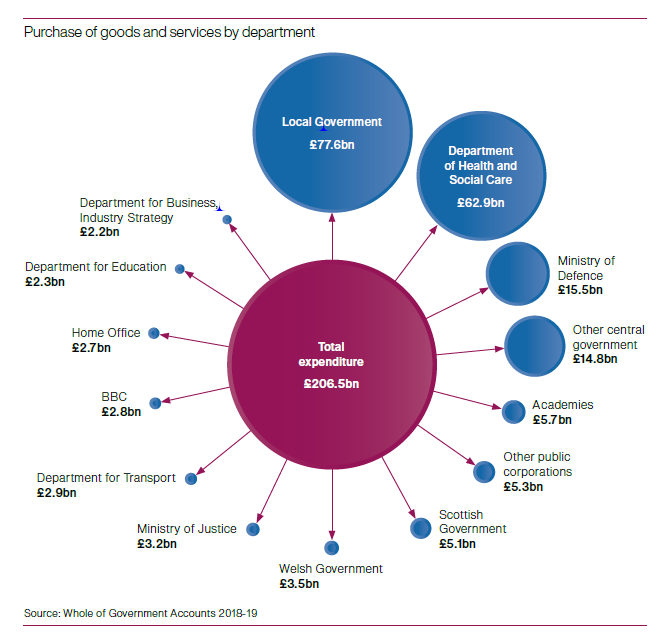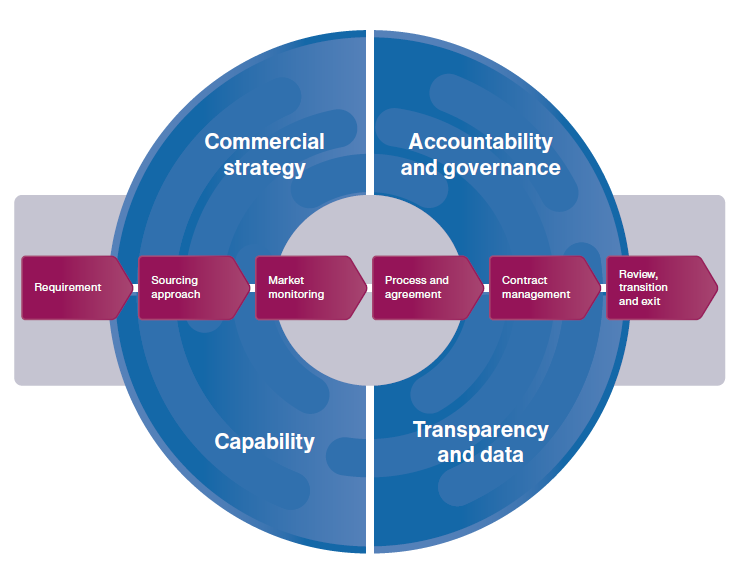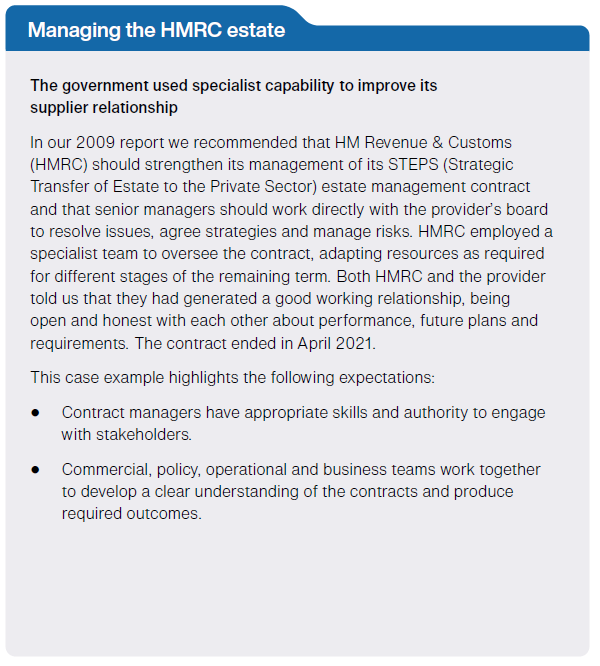The NAO’s good practice guide for managing the commercial lifecycle
The government’s response to the COVID-19 global pandemic has drawn renewed, and possibly unprecedented, attention to public procurement and commercial practice in government.
Our aim at the NAO is to provide an independent and evidence-based perspective, on how public authorities can achieve better outcomes and value for money throughout their commercial activities.
Through our value for money studies programme we have reported on procurement during the pandemic, the supply of PPE, availability of ventilators and preparations for COVID-19 vaccines. We have reported twice on Test and Trace – in an interim report and a progress update as well as the procurement of the free school meals voucher scheme. We have also kept track of the estimated cost of government measures in response to the pandemic, via the COVID-19 cost tracker which currently registers £372 billion.
Given that over £200 billion of UK taxpayers’ money is spent every year on the purchase of goods and services (and this excludes capital expenditure), it is right that attention is focused consistently on commercial activity. The diagram below shows the distribution of this expenditure by department in one financial year.
Annual expenditure on goods and services by government department (£ billion):

Enhancing our good practice guidance
Over the last couple of months we have engaged with government departments, local authorities, professional bodies, commercial experts and our colleagues to consider how to improve the NAO’s existing commercial guidance and we have listened carefully to helpful advice and suggestions. We have also reviewed the revised guidance issued by the government commercial function and discussed the government’s plans for amendments to domestic legislation.
Our conclusions and recommendations to government that support improved performance in procurement have featured in some 209 reports examining 350 contractual arrangements published throughout the last 20 years. Alongside our good practice guide we have also published a complete list of past reports, noting that many of the findings are applicable to the wider public sector
Our good practice guide draws on all these valuable sources of insight and practice, and it is intended to support public bodies prepare proactively for future procurements. It will help practitioners understand and effectively manage all elements of the commercial lifecycle, and will support senior leaders with governance responsibilities in asking the right questions about commercial activity in their organisations.
We have presented it in 10 sections as illustrated in the diagram below.
- Four strategic sections highlight the elements that support good commercial outcomes: commercial strategy, capability, accountability & governance, transparency & data.
- Six procedural stages address the end-to-end commercial lifecycle, starting with the identification of a requirement; choice of sourcing approach; market monitoring; process and agreement; contract management; and review, transition and exit.
Each of the ten sections contains a description, lists our expectations of good practice, supported by our extensive evidence base, and highlights what needs to improve. In addition, the guide contains useful way to find a wide range of relevant guidance issued by the government commercial function and professional practice.
Good practice guide for managing the commercial lifecycle

Our good practice guide also contains 20 case studies summarising the NAO’s findings from published reports. In the ‘commercial capability’ section we refer to our report on Managing the HMRC estate and outline how government negotiated improved cost transparency with its supplier. In this and other case studies in the guide we aim to bring our expectation of good practice to life.

This guidance is essential reading for policy and commercial staff involved at all levels of public procurement and commercial activities, including senior leaders and non-executive board members of public authorities. It complements our continuing programme of reviews to scrutinise public procurement and commercial activity across government.
In the coming months we will publish a series of blogs focussing on individual stages of the commercial lifecycle, and drawing out our findings and expectations for good practice. We hope to engage with as many of you as possible as we discuss this renewed interest in procurement and collaborate with colleagues across government and other organisations to embed good practice in procurement that will drive good outcomes for taxpayers and the public as a whole.
The good practice guide for manging the commercial lifecycle is published on the NAO website and can be accessed via this link.



